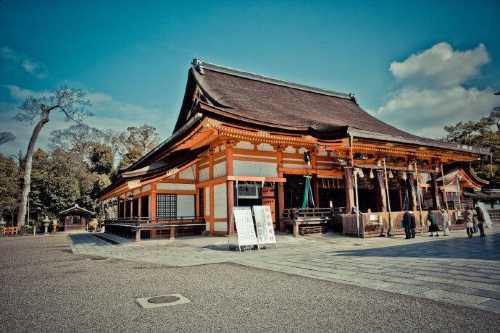App
Customer Support
Find Bookings
Popular Trip Moments
Japan. Kyoto. Sketches | Japan. Kyoto. Kiyomizu-dera | Japan. Kyoto. Fushimi-Inari | Japan. Kyoto. Kinkaku-ji | 🇯🇵 Avoid the crowds with this one-day guide to Yusai-tei and Arashiyama | Japan trip (Osaka, Tokyo, Kyoto)!!! | ⛩️ Guide to the Tanabata Illumination at Kifune Shrine | 📍 Pokémon Center Kyoto | [Kyoto🇯🇵] Time travel the moment you enter Nijo Castle🕰 | Kyoto | Food Review Osaka-Kyoto Ep.2🍕🍣 | Kyoto | Daikaku-ji Temple, Transformed from an Imperial Villa into a Shingon Buddhist Temple | Kyoto’s Charm: Where Culture, Nature, and History Collide | 🌸 Strolling Through Shichijo Bridge Under Wisteria Skies | Arashiyama Bamboo Grove – Kyoto📍 Destination: Kyoto, Japan💴 Budget: Free💡 | Tradition Meets the Future: The Architectural Charm of Kyoto Station | Kyoto: Arashiyama & Tenryu-ji Temple | The Wind Chime Festival, which brings cool color to Kiyomizu-dera Temple every midsummer, will be held again this year 🎐🏮👘✨ | A recommended donut shop for when you want to take a break🍩☕️ | My Two Vacation Homes in Kyoto | [Kyoto] Relax at Chiikawa Mogumogu Honpo Kyoto Fushimi Branch🍡✨ | Kyoto and Surrounding Areas: Food and Festivals - Gion Matsuri, Nara, Shiga | A tranquil spot in Kyoto: Fufu-Kyoto | Kyoto | Kyoto | Daiwa Roynet Hotel Shijo Karasuma, convenient for staying in Shijo shopping district | Kyoto | Daiwa Roynet Hotel PREMIER Kyoto Station Front | Kyoto | Terrace Hachijo East Exit Daiwa Roynet Hotel | Budget-Friendly Traditional Townhouse Stay in Kyoto | Mount Hiei | 【Feel the World Heritage】Daigo-ji Temple
Recommended Attractions at Popular Destinations
Popular Attractions in Bangkok | Popular Attractions in Manila | Popular Attractions in Tokyo | Popular Attractions in Taipei | Popular Attractions in Hong Kong | Popular Attractions in Seoul | Popular Attractions in Kuala Lumpur | Popular Attractions in Los Angeles | Popular Attractions in Shanghai | Popular Attractions in New York | Popular Attractions in Shenzhen | Popular Attractions in Osaka | Popular Attractions in Singapore | Popular Attractions in London | Popular Attractions in Guangzhou | Popular Attractions in San Francisco | Popular Attractions in Beijing | Popular Attractions in Macau | Popular Attractions in Bali | Popular Attractions in Jakarta | Popular Attractions in Paris | Popular Attractions in Ho Chi Minh City | Popular Attractions in Istanbul | Popular Attractions in Phuket | Popular Attractions in Chicago | Popular Attractions in Seattle | Popular Attractions in Toronto | Popular Attractions in Orlando | Popular Attractions in Cebu | Popular Attractions in Chiang Mai
Popular Restaurants in Kyoto
Okabeya | Moritaya - Kiyamachi | Hirokawa | Ogata | Owatari | Toufudokorotougaden | Mashita | Uosaburo | Kyoto Kaiseki Yakiniku (BBQ) HIRO Kyoto Station | Restaurant Yonemura Gion | GION SASAKI | Toriyasa | Soba no Mi Yoshimura | Gion Koishi | Kikunoi Honten | Nanzenji Junsei | Sushi Gion Matsudaya | Gion Uokeya U | Kyogoku Kaneyo | Mishima Tei Honten | MENYA INOICHI | Hisago | HYOTEI | Kikunoi Roan | KYOTO KITCHO | Ichiran - Kyoto Kawaramachi | Yamamoto Menzou | Hassun | Nakamura Tokichi - Kyoto Station | Honke Daiichi-Asahi
Popular Ranked Lists
Popular Premium Hotels in Changzhi | Top 10 Trending Attractions in Phuket | Top 10 Trending Attractions in Harbin | Popular Premium Hotels in Chengmai | Popular Trending Attractions in Seoul | Popular Trending Attractions in Sanya | Top 20 Premium Hotels in Shantou | Top 10 Trending Attractions in Zhoushan | Top 50 Must-Visit Restaurants in Frankfurt | Top 50 Must-Visit Restaurants in Sapporo | Top 50 Must-Visit Restaurants in Bruges | Popular Trending Attractions in London | Top 10 Trending Attractions in Guangzhou | Top 50 Must-Visit Restaurants in Xi'an | Top 20 Premium Hotels in Jinhua | Popular Trending Attractions in Suzhou | Top 50 Must-Visit Restaurants in Chengdu | Top 10 Premium Hotels in Zhenjiang | Top 50 Must-Visit Restaurants in Dalat | Popular Premium Hotels in Chuzhou | Top 10 Trending Attractions in Nanjing | Popular Premium Hotels in Longyan | Popular Premium Hotels in Yuxi | Popular Premium Hotels in Ningde | Popular Trending Attractions in Changsha | Top 50 Must-Visit Restaurants in Madrid | Top 10 Trending Attractions in Jeju | Top 20 Premium Hotels in Nantong | Top 50 Must-Visit Restaurants in Tokyo | Top 50 Must-Visit Restaurants in Auckland
About
Payment Methods
Our Partners
Copyright © 2025 Trip.com Travel Singapore Pte. Ltd. All rights reserved
Site Operator: Trip.com Travel Singapore Pte. Ltd.
Site Operator: Trip.com Travel Singapore Pte. Ltd.









